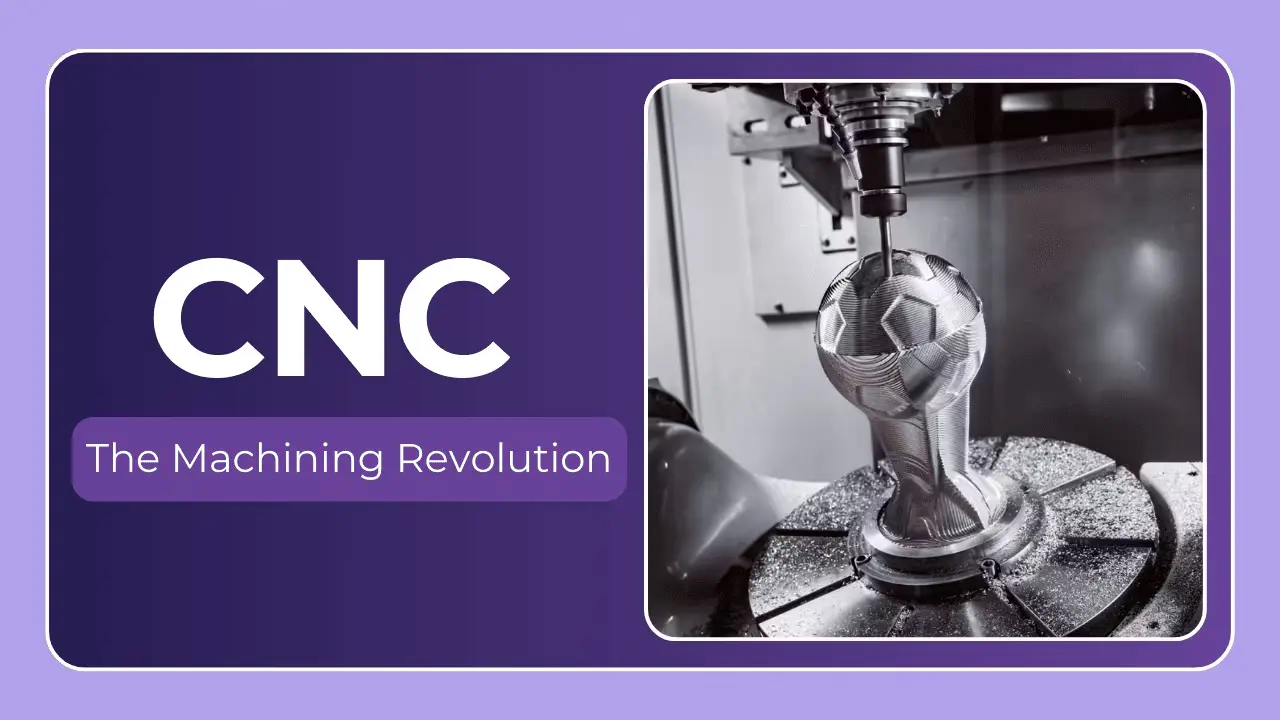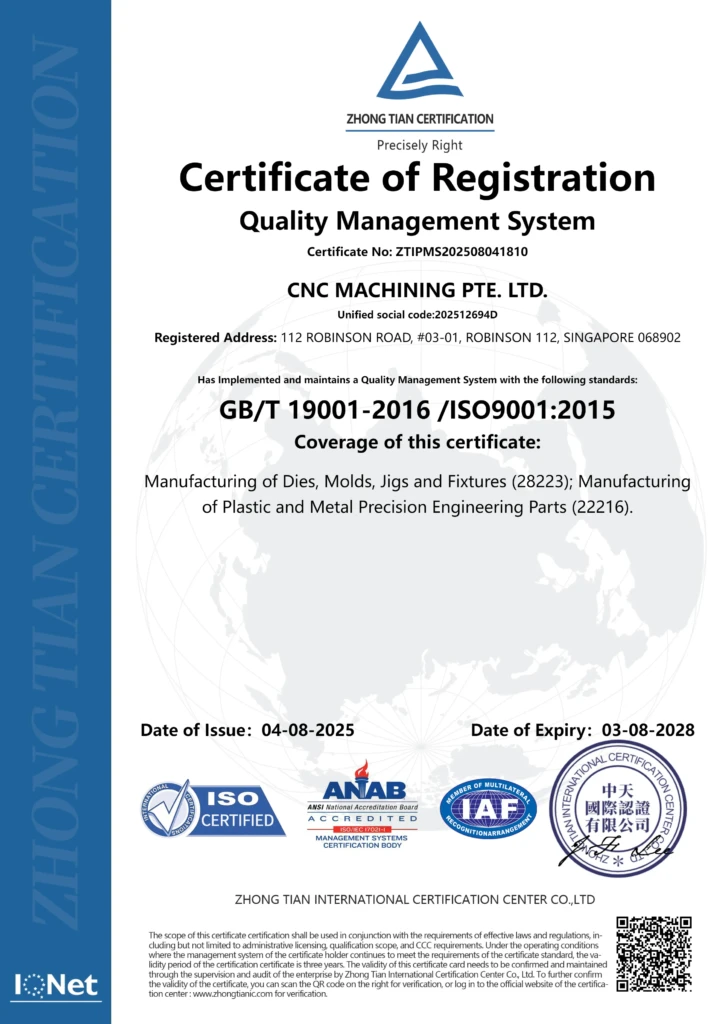Navigating the World of CNC Precision Machining: A Comprehensive Guide
In today’s manufacturing landscape, precision is paramount. Whether you’re developing a groundbreaking medical device, a high-performance aerospace component, or a complex industrial tool, the accuracy and repeatability of your parts are critical. This is where CNC (Computer Numerical Control) precision machining steps in. But understanding the intricacies of this process can be daunting. This guide aims to demystify CNC machining, covering everything from the basics to advanced techniques, material considerations, and how to choose the right partner for your project – with a specific look at the advantages of five-axis machining.
What is CNC Precision Machining?
At its core, CNC machining is a subtractive manufacturing process. This means material is removed from a solid block (the workpiece) to create the desired shape. Unlike traditional machining which relies heavily on manual operation, CNC machining utilizes pre-programmed computer instructions to control cutting tools. These tools, often rotating at high speeds, precisely remove material layer by layer, guided by a digital design (typically a CAD file).
The “precision” aspect comes from the incredible accuracy and consistency achievable with CNC technology. Computer control minimizes human error, resulting in parts that meet extremely tight tolerances – often measured in thousandths of an inch. This level of precision is crucial for applications where even minor deviations can impact functionality or performance.
The CNC Machining Process: A Step-by-Step Breakdown
- Design (CAD): The process begins with a detailed 3D model created using Computer-Aided Design (CAD) software. This model defines the exact geometry of the desired part.
- CAM Programming: The CAD model is then imported into Computer-Aided Manufacturing (CAM) software. CAM software translates the design into a series of machine instructions (G-code) that the CNC machine can understand. This involves defining toolpaths, cutting speeds, feed rates, and other parameters.
- Machine Setup: The workpiece is securely fixtured onto the CNC machine’s worktable. The appropriate cutting tool is selected and loaded into the machine’s spindle.
- Machining: The CNC machine executes the G-code program, moving the cutting tool along the programmed toolpaths to remove material from the workpiece.
- Quality Control: Once machining is complete, the part undergoes rigorous quality control inspection to ensure it meets the specified dimensions and tolerances. This often involves using Coordinate Measuring Machines (CMMs) and other precision measurement tools.
- Post-Processing (Optional): Depending on the application, the part may undergo additional post-processing steps such as deburring, polishing, anodizing, or coating.
Common CNC Machining Operations
Several different machining operations can be performed using CNC technology. Here are some of the most common:
- Milling: Uses rotating cutting tools to remove material from a workpiece. Versatile for creating a wide range of shapes and features.
- Turning: The workpiece rotates while a stationary cutting tool removes material. Ideal for creating cylindrical parts.
- Drilling: Creates holes in the workpiece.
- Tapping: Creates threads in holes.
- Grinding: Uses abrasive wheels to achieve extremely precise finishes and tight tolerances.
- EDM (Electrical Discharge Machining): Uses electrical sparks to remove material. Suitable for hard materials and complex geometries.
Material Considerations: Choosing the Right Fit
The choice of material is critical for any CNC machining project. Here’s a breakdown of commonly machined materials:
| Material | Properties | Typical Applications | Machinability |
|---|---|---|---|
| Aluminum | Lightweight, corrosion-resistant, good thermal conductivity | Aerospace, automotive, electronics | Excellent |
| Stainless Steel | High strength, corrosion-resistant, durable | Medical devices, food processing, marine applications | Good |
| Titanium | Exceptional strength-to-weight ratio, corrosion-resistant | Aerospace, medical implants, high-performance components | Challenging |
| Brass | Good machinability, corrosion-resistant, electrical conductivity | Plumbing fixtures, electrical connectors, decorative items | Excellent |
| Plastic (ABS, Delrin, Nylon) | Lightweight, versatile, cost-effective | Prototypes, housings, gears | Good to Excellent |
| Copper | Excellent electrical and thermal conductivity | Electrical components, heat sinks | Good |
The Rise of Five-Axis CNC Machining
While three-axis machining (movement in X, Y, and Z axes) is sufficient for many applications, five-axis machining offers significant advantages for complex parts. Five-axis machines add two additional axes of rotation (typically A and B or A and C), allowing the cutting tool to approach the workpiece from multiple angles simultaneously.
Benefits of Five-Axis Machining:
- Increased Complexity: Machining of intricate geometries and undercuts becomes possible.
- Reduced Setup Time: Fewer setups are required, as the part can be machined from multiple sides in a single operation.
- Improved Surface Finish: The ability to maintain optimal tool orientation results in a smoother surface finish.
- Higher Accuracy: Reduced deflection and vibration lead to improved accuracy.
- Shorter Cycle Times: More efficient toolpaths and reduced setup times contribute to faster production.
CNC MACHINING PTE. LTD in Singapore specializes in five-axis CNC machining, offering advanced capabilities to tackle even the most challenging metal parts manufacturing problems. Their expertise and state-of-the-art equipment ensure high-quality, precise components delivered quickly.
Design for Manufacturability (DFM): Optimizing Your Design for CNC Machining
Before sending your design to a CNC machining service, it’s crucial to consider Design for Manufacturability (DFM) principles. DFM involves optimizing your design to make it easier and more cost-effective to manufacture. Here are some key DFM considerations:
- Minimize Sharp Internal Corners: Sharp corners create stress concentrations and can be difficult to machine. Use fillets or radii instead.
- Avoid Deep, Narrow Pockets: These can be challenging to machine and may require specialized tooling.
- Consider Tool Access: Ensure the cutting tool can reach all the features of your design.
- Specify Tolerances Carefully: Tighter tolerances increase manufacturing costs. Only specify tolerances as tight as necessary.
- Material Selection: Choose a material that is appropriate for the application and machinable with CNC technology.
Choosing the Right CNC Machining Partner
Selecting the right CNC machining partner is crucial for the success of your project. Here are some factors to consider:
- Capabilities: Does the provider have the equipment and expertise to handle your specific requirements (e.g., five-axis machining, specific materials)?
- Quality Control: What quality control procedures are in place to ensure accuracy and consistency?
- Turnaround Time: What is the estimated lead time for your project?
- Cost: Obtain quotes from multiple providers and compare pricing.
- Communication: Is the provider responsive and communicative?
- Experience: Does the provider have experience machining parts similar to yours?
CNC MACHINING PTE. LTD offers a one-stop solution for custom precision machining, including post-processing and finishing services. They can quickly customize and process most materials, making them a reliable partner for a wide range of applications.
Conclusion: Embracing the Future of Precision Manufacturing
CNC precision machining is a powerful technology that enables the creation of complex, high-quality parts with exceptional accuracy and repeatability. Understanding the fundamentals of the process, material considerations, and DFM principles is essential for maximizing its benefits. As manufacturing demands continue to evolve, advanced techniques like five-axis machining are becoming increasingly important.
By carefully selecting a qualified CNC machining partner – like CNC MACHINING PTE. LTD with their advanced five-axis capabilities and commitment to quality – you can ensure your project is a success. Don’t hesitate to explore the possibilities of CNC machining and unlock the potential for innovation in your products. Customize your precision parts today and experience the difference!




